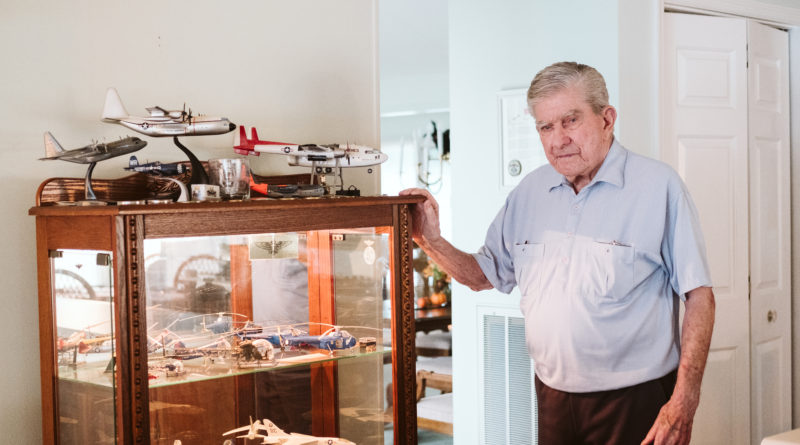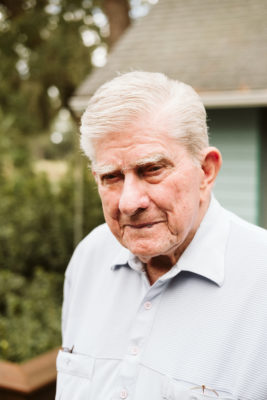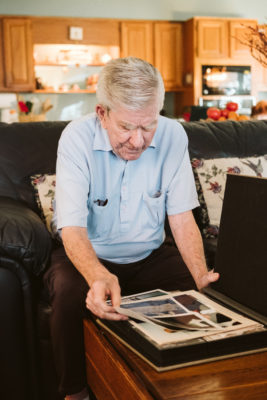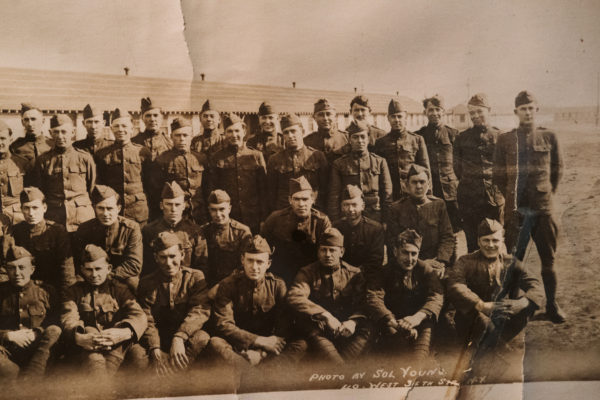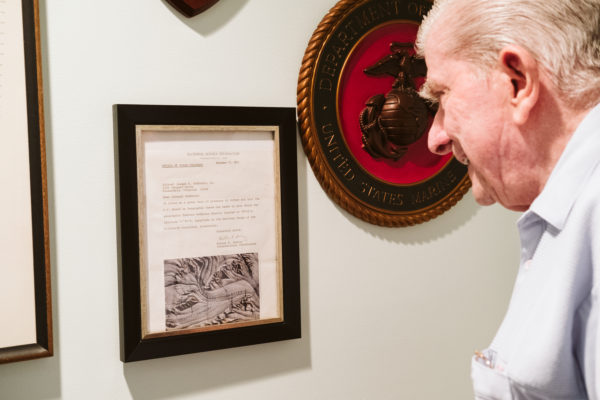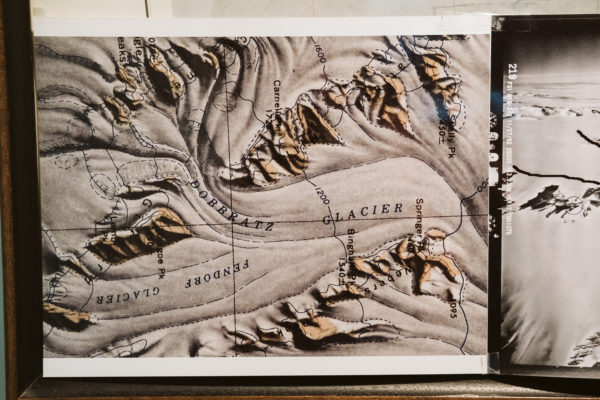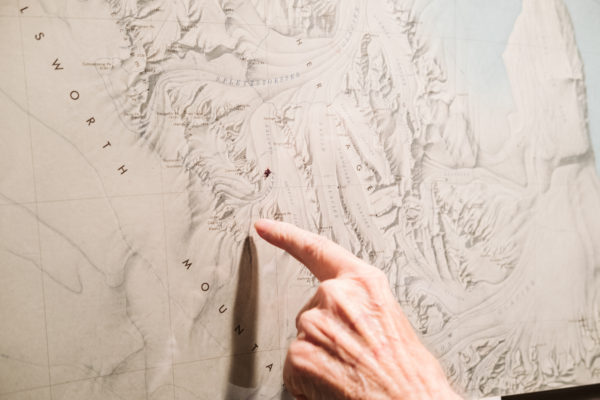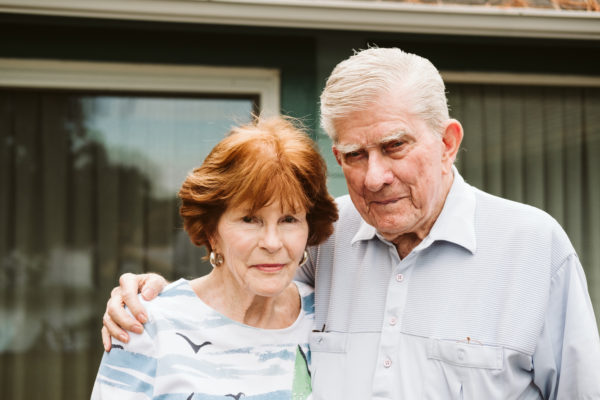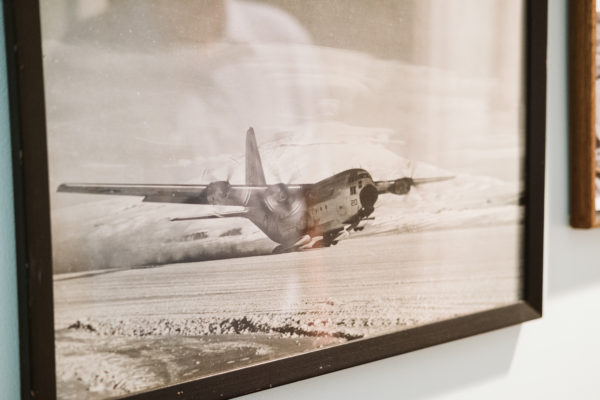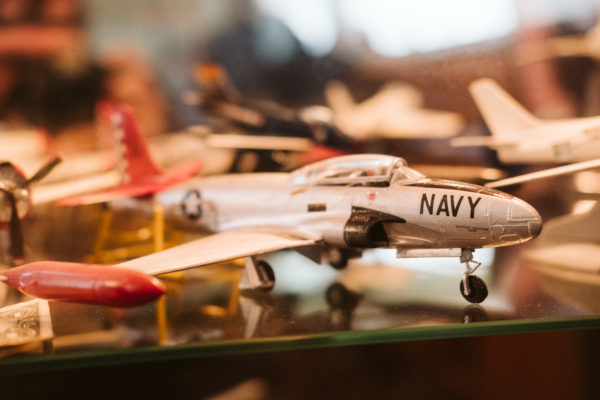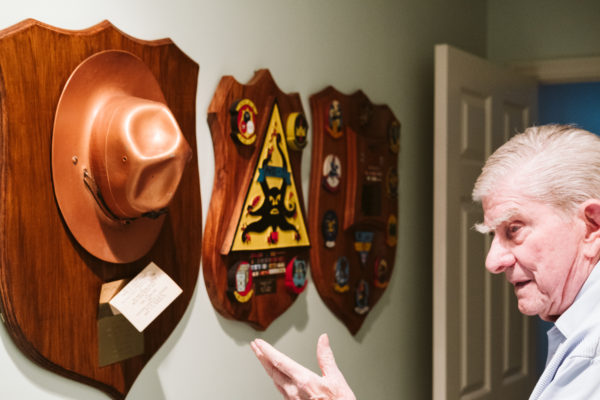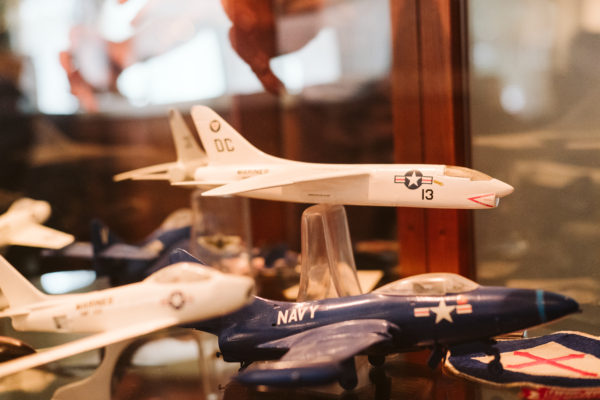Colonel Joseph Dobbrantz Jr., USMC (Ret)
From The South Pole To Beaufort
story by NATHAN LIVESAY photos by GREYSON JOHNSTON
Colonel Joseph Dobbrantz Jr., USMC (Ret) has packed a lot of action into his 92 years of life. While he has retired and settled into life here in Beaufort for almost 40 years, Dobbrantz’s military career spanned parts of 5 decades and included service during World War II, the Korean War and the Vietnam War. His travels took him quite literally around the world as he served his country everywhere from Beaufort to Hawaii to the Pentagon to the South Pole. He flew helicopters, fighter jets and transport planes and his career saw him spend stints stationed at both the Marine Corps Recruiting Depot Parris Island and Marine Corps Air Station Beaufort. He met his wife serving here in Beaufort and he and Catherine “Dinksy” Dobbrantz have been married for over 47 years.
Dobbrantz was born in Brighton, Massachusetts on October 27, 1927. His father was a World War I veteran who served in the United States Army in France. He was educated in Catholic School and in 1945 he joined the Coast Guard immediately after high school graduation. He served with the Coast Guard until the end of World War II and then used the G.I. Bill to pay for a college education at Boston College. Dobbrantz was the first in his family to obtain a college education. Upon graduation in 1951 he decided to join the United States Marine Corps where he pursued a career as a pilot.
After attending Marine Officer Candidate School at Parris Island, Dobbrantz initially served a year on the flight line before volunteering to serve as a ground officer during the Korean Conflict. After serving in Korea for a year, he returned to the United State to attend Flight Training. He spent more than a year working through the various stages of training and was anxious to get in the air. As it turned out the quickest route to the air was as a helicopter pilot, so Dobbrantz started his career flying helicopters. That wouldn’t be all he would fly as in time he would end up flying jets and cargo planes too. He ended up being an aircraft carrier qualified on both helicopters and jets. As a result of his various assignments, before he retired he had the opportunity to operate a total of 20 different aircraft throughout his career. On display in his home is a replica of each aircraft he flew over his career. He has a model of the CHS-46 helicopter, the FJ Fury, F-8 Crusader, the C-130 transport and many more, it is quite the sight to see and a testament to his versatility and skill as a pilot to see the evolution of the aircraft he flew over the decades.
One of the most interesting assignments he had was as a member of the Navy’s Air Development Squadron six (VX6). Dobbrantz served two six month tours in Antarctica during Operation Deep Freeze. He was a pilot as well as the cargo officer to resupply various duty stations including the South Pole station. He would fly an LC-130 Ski-Equipped Hercules transport plane about 80 hours a month from September to March transporting equipment, supplies and personnel to the stations. Conditions were so difficult that flying was only possible during this time and it took a skilled and experienced pilot to navigate the environment successfully. Flying and landing in these conditions were often perilous and Dobbrantz described the experience like flying inside a carton of milk because of the visibility challenges posed by the all white conditions. In addition to flying, Dobbrantz was also responsible for making sure all of the equipment and supplies were loaded properly so that the plane wasn’t overloaded and that the cargo wouldn’t shift during flight which would have resulted in making the flights even more difficult.
Raised a Catholic, Dobbrantz recalled with pride a Christmas 1963 flight where he transported Cardinal Francis Spellman, Military Vicar of the Armed Forces, safely to and from the station. During this flight, he was pleased to learn that the Cardinal knew members of his family from back in Boston. While he served his two tours there he became so well liked and well respected by the geological research team from the University of Minnesota that they wanted to find a way to recognize his contributions to the success of their mission. Unbeknownst to him, they began petitioning to have him honored by naming one the glaciers they studied after him. Because of his skill as a pilot and his contribution to their success the United States Board of Geographic Names christened the “Dobbrantz Glacier” in 1973. The precise location of the Dobbrantz Glacier is at 79 24′ S. latitude 85 05′ W. longitude in the Heritage Range of the Ellsworth Mountains, Antarctica.
Following his time in Antarctica, Dobbrantz attended the Naval War College in Rhode Island and his final research paper there was on his time in Antarctica. Following the completion of the Command and Staff Course at the War College, Dobbrantz served in Vietnam. During 1968 and 1969 he commanded the “Purple Foxes” of Marine Medium Helicopter Squadron 364. Following Vietnam, Dobbrantz returned to duty at various posts including Parris Island, MCAS Beaufort, the Pentagon and Quantico before his retirement in 1981 after 30 years of service.
A tour of Dobbrantz’s home shows the marks of a life well-lived. Photos of friends and family over the years are prominently displayed. His walls are full of mementos and honors and recognitions from his military service and beyond. One photo is of a CHS-46 helicopter that he flew in Vietnam and his son had an opportunity to fly the same helicopter during his military service as well. He is a generous storyteller, proud of his family and his service to the United States. If you ever get a chance to meet Dobbrantz, make sure you ask him as many questions as you can. His life is a multitude of intriguing and interesting stories to share about all he has seen and experienced.

